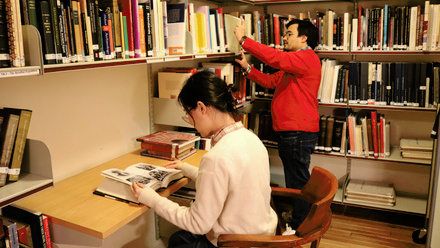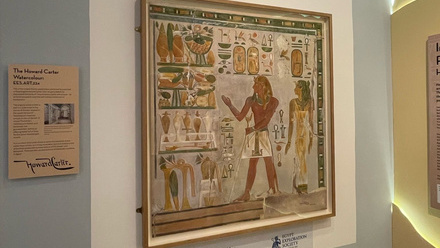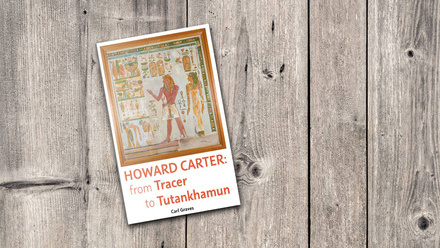Artwork and Egyptian Archaeology
The artwork collection in the Lucy Gura archive consists of 344 individual pieces of artwork, mostly watercolours and ink drawings. In large part, these served as documentation of paintings, reliefs, inscriptions and objects from various sites in Egypt. The most frequent sites featured are Deir el-Bahari (174) and Beni Hasan (117) and some of the highlights from the collection are explored by 2016 archive intern Urška Furlan here.
The most famous artist of the works in this collection, is Howard Carter, who drew 47 watercolours stored in the Lucy Gura Archive. Two of his watercolours are from Deir el-Bahari, while all others were made at Beni Hasan in 1895, mostly documenting decoration of tombs of Amenemhet (tomb 2) and Khnumhotep II (tomb 3).
Another well-known artist represented in the collection, is the founder of Egypt Exploration Fund, Amelia Edwards herself. Although a crucial character in the history of UK Egyptology, today only one of her watercolours, entitled Arab tombs near Siout, is held in the Society’s archive (many more can be found at Somerville College, Oxford and a collection of her artwork is also stored at the Griffith Institute, Oxford).
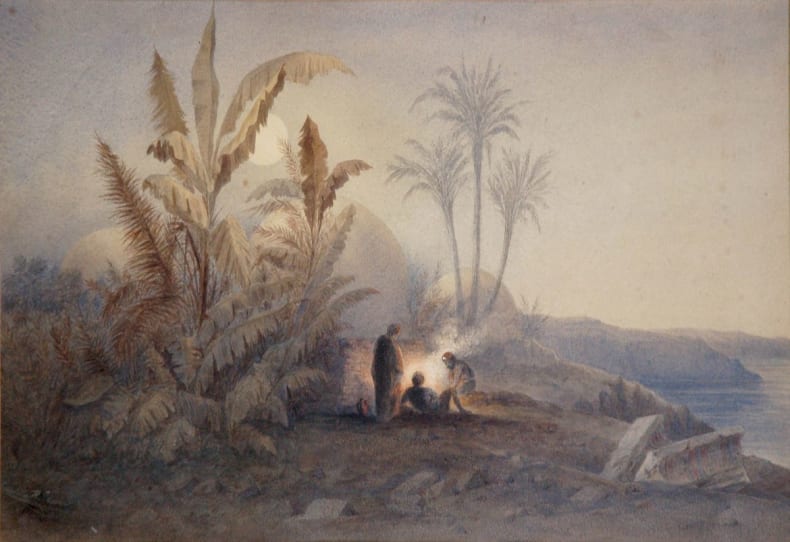
ART.212, Arab tombs near Siout, Amelia Edwards, 1877 (online record here)
A recent project to catalogue all of the EES artwork, initiated by John Wyatt and Lee Young in 2012, has now completed the full online provision of the collection thanks to the work of Urska Furlan, an intern who joined us through the Erasmus scheme from Ljubljana in Slovenia during summer 2016. Thanks to this project, it is now possible to shed some light on a few lesser known artists in the archives.
The largest amount of drawings from the artwork collection was made by an A. Carthew whose name appears on 115 drawings and watercolours, mostly of scarabs and faience beads from Deir el-Bahari. Who A. Carthew was, remains a slight mystery as her full name is not provided anywhere in the EES artwork sub-archive. She could be Miss Alice Grace Elizabeth Carthew who might have seen and drawn the finds directly in the British Museum and have never actually gone to Egypt. But the scarabs from Deir el-Bahari that are in the British Museum today, could not be directly matched with the drawings from the archive during a recent research trip, so questions about A. Carthew remain unanswered for the moment.
Another contributor is Rosalind Frances Emily Paget who made watercolours, mostly of hieroglyphs, from sites at Deir el-Bahari, Abydos and El-Kab during 1896. Some of her facsimiles were used by Griffith for his publication of Hieroglyphs in 1898 and most of her legacy remains at the Griffith Institute in Oxford. 75 of her watercolours are however stored in the EES archive and are today some of the most beautiful pieces in the artwork collection.
![ART.273, [Scene from expedition to Punt], Deir el-Bahari by Rosalind Paget](https://www.ees.ac.uk/static/5152efdd7f794b8e5c8838c245abf9b4/790x453_highestquality__4a7c7e45a350/ART273-Scene-from-expedition-to-Punt-Deir-el-Bahari-by-Rosalind-Paget.jpg)
ART.273, [Scene from expedition to Punt], Deir el-Bahari, Rosalind Paget (online record here)
71 drawings of wall paintings from Beni Hasan and El-Bersha were made by Marcus Worsley Blackden who visited the sites as the volunteer member of the Archaeological Survey under Newberry during seasons 1890-1 and 1891-2. Many of the drawings were reproduced in Beni Hasan I, III, IV and El Bersheh I.
Wall paintings from Beni Hasan were copied also by the director of the survey, Percy Edward Newberry. Today the EES archive holds only 5 of his watercolours and all of them are reproduced in Beni Hasan I and III.
Most of the artwork presered at the EES were never intended as purely ‘art’, but instead could be considered archaeological records – though of extraordinary beauty. However, some ‘art’ has made its way into the collection. Examples of such are two views of Abu Simbel made by American painter Henry Bacon.
The Egypt Exploration Society’s collection of artwork relating to archaeological sites in Egypt serves as a valuable resource for researchers wanting to learn more about the colours preserved on Egypt’s monuments when discovered, the themes represented in tombs and temples, or the history of epigraphy in Egyptology. It almost goes without say that, as well as useful to researchers, they’re also rather pleasant to the eye!
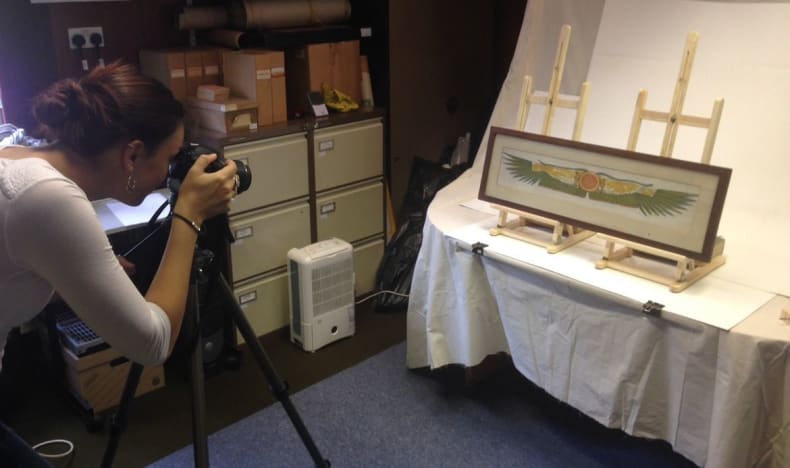
Urska Furlan photographing ART.229, Winged Sun-disk, Deir el-Bahari, Rosalind Paget (online record here)
Online access to the artwork sub-archive
Between 2012 and 2016 Lee Young and John Wyatt created a catalogue of the watercolours in the collection in order to ascertain which paintings the Society had and where these might have been published. John’s background as an ornithologist has been instrumental in identifying which animals are represented in many of the paintings. In summer 2016 the Society took on Urska Furlan as an intern to work on the uploading of these records into the online archive catalogue. As well as uploading the records, Urska also digitised the remaining paintings and made these available through the catalogue too.
These records are now available via our Artwork sub-archive catalogue

